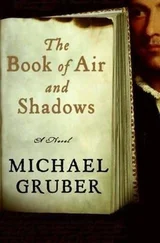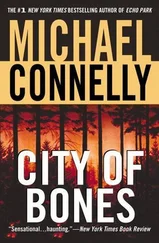Michael Gruber - Valley of Bones
Здесь есть возможность читать онлайн «Michael Gruber - Valley of Bones» весь текст электронной книги совершенно бесплатно (целиком полную версию без сокращений). В некоторых случаях можно слушать аудио, скачать через торрент в формате fb2 и присутствует краткое содержание. Жанр: Полицейский детектив, на английском языке. Описание произведения, (предисловие) а так же отзывы посетителей доступны на портале библиотеки ЛибКат.
- Название:Valley of Bones
- Автор:
- Жанр:
- Год:неизвестен
- ISBN:нет данных
- Рейтинг книги:5 / 5. Голосов: 1
-
Избранное:Добавить в избранное
- Отзывы:
-
Ваша оценка:
- 100
- 1
- 2
- 3
- 4
- 5
Valley of Bones: краткое содержание, описание и аннотация
Предлагаем к чтению аннотацию, описание, краткое содержание или предисловие (зависит от того, что написал сам автор книги «Valley of Bones»). Если вы не нашли необходимую информацию о книге — напишите в комментариях, мы постараемся отыскать её.
Valley of Bones — читать онлайн бесплатно полную книгу (весь текст) целиком
Ниже представлен текст книги, разбитый по страницам. Система сохранения места последней прочитанной страницы, позволяет с удобством читать онлайн бесплатно книгу «Valley of Bones», без необходимости каждый раз заново искать на чём Вы остановились. Поставьте закладку, и сможете в любой момент перейти на страницу, на которой закончили чтение.
Интервал:
Закладка:
Michael Gruber
Valley of Bones
There are four evidences of divine mercy here below. The favors of God to beings capable of contemplation (these states exist and form part of their experience as creatures). The radiance of these beings, and their compassion, which is the divine compassion in them. The beauty of the world. The fourth evidence is the complete absence of mercy here below.
— SIMONE WEIL,GRAVITY AND GRACEThe hand of the Lord was upon me, and carried me out in the Spirit of the Lord, and set me down in the midst of the valley, which was full of bones.
— EZEKIEL,37:1Blood of Christ, Society of Nursing Sisters of the (SBC)
Founded by Bd. Marie-Ange de Berville in 1895, the Nursing Sisters of the Blood of Christ are dedicated to giving succor and providing healing to the innocent victims of war and oppression. The order, which was one of the few to retain the habit after the reforms of the Second Vatican Council, is noted for its almost military discipline and its custom of recruiting very young girls from the ranks of abandoned and disabled children throughout the world, although this aspect of its work has been widely criticized. Sisters of the order have distinguished themselves by their bravery and self-sacrifice during both world wars and thereafter in many fields of strife. Although counting no more than three thousand professed sisters and oblates at the present time, it has lost to death over 120 of its number, more than any other order in modern times. Traditionally, its members categorically refuse to leave patients and communities for which they have taken responsibility, in keeping with the order’s motto “Where we go, we remain.”See also Bd. Marie-Ange de Berville; Pope Pius XI; Cardinal Matteo Ratti.
— ENCYCLOPEDIA CATHOLICA, 2D ED.,1997One
The cop happened to look up at just the right instant or he would have missed it, not the actual impalement, but the fall itself. It took him a disorienting second to realize what he was seeing, the swelling black mass against the white stone and glass of the hotel facade, and then it was finished, with a sound that he knew he would carry to his grave.
After that, he took a minute or so to sit on the bumper of his car with his head down low, so as not to pollute the crime scene with his own vomit, and then reported the event on his radio. He called it in as a 31, which was the Miami PD code for a homicide, although it could have been an accident or a jumper. But itfelt like a homicide, for reasons the cop could not then explain. While he waited for the sirens, he looked up at the row of balconies that made up the face of the Trianon Hotel. The thought briefly crossed his mind that he ought to go and check the guy out to make sure that he was actually dead, that perhaps the wrought iron fleur-de-lis spearheads protruding from the man’s neck, chest, and groin had missed all the vital organs in their paths.
He was a dutiful officer, but this was his first fresh corpse, and he decided not to investigate more closely than a couple of yards, telling himself that it was better not to contaminate the crime scene. The corpse had been a good-looking guy, he thought, leather-dark skin but aquiline features: hooked nose, thin lips, a little spade beard. There was something foreign about the face, although the officer could not have said what it was.
Turning away from it with some relief, he inspected the facade of the hotel, noting that there were three vertical columns of balconies adorning the twelve floors of the building, which was capped by a copper roof styled after a French chateau. That was the theme of the Trianon Hotel, as much French as would fit: besides the roof, there were gilt cornices, coats of arms, New Orleans-style wrought iron on the balconies, and, of course, fleurs-de-lis on the iron fence that surrounded the south face of the property. People were coming out of the hotel now, frightened men in the hotel’s white livery, a few guests from the lobby. A woman’s shriek recalled the cop to his duty, and he herded them all back into the cool interior.
A broad man in a double-breasted cream suit accosted him at this point and announced himself as the manager. He knew who it was, a guest, 10 D, and gave a name. The cop wrote it down in his notebook. The manager departed, dabbing at his mouth with a handkerchief, and the cop resumed his study of the facade, although his eye kept drifting over to the victim. The flies arrived and got to their buzzing tasks, and shortly after that an ambulance pulled up. The paramedics emerged, took in the scene, declared the man officially dead, made wiseass paramedic remarks, and went back to their bus to wait in the cool of the AC. The crime scene van arrived, and the CSUs started to assemble their various implements of investigation and their cameras, while making some of the same cracks (that’s what I call piercings; sorry, he can’t come to the phone right now) that the paramedics had made, and after a little while an unmarked white Chevy pulled up, and out of it came a neatly built, caramel-colored man, in a beautifully cut gray-green silk and linen suit. The cop sighed. Of course it had to be him.
“Morales?” asked the man. The cop nodded, and the man held out his hand to be shaken, saying, “Paz.”
“Uh-huh,” said Morales. He knew who Jimmy Paz was, as did everyone on the Miami PD, as did everyone in Metropolitan Dade County who owned a television. Morales had not, however, met him professionally until now. Both men were first-generation Cuban immigrant stock, but the patrolman considered himself white, like 98 percent of the Cuban migration to America, and Paz was not white, yet also undeniably Cuban. It was disconcerting, even without the tug of racism, which Morales was conscious of trying to resist.
“You’re the first response on this?” Paz was not looking at the corpse. He was looking at Morales, with a pleasant smile on his face and little lights glinting in his hazel eyes. He was looking at a man in his early twenties, with a fine-featured beardless face, in the complexion usually called olive, but which is more like parchment, a face that might be choirboy open when relaxed but was now guarded, tense, the intelligent dark eyes focused on the detective so hard they almost squinted.
“No, I was here already. Somebody called in a disturbance at the hotel. It was a hoax call. I was just about to pull out when he came down.”
“You saw him drop?”
“Yeah.”
Paz looked up at the face of the hotel and saw what Morales had seen. It was perfectly clear from which balcony the victim had begun his fatal descent. All the balconies but one had their glass doors closed against the afternoon heat. In the single exception the door was open and the white curtains were flapping like flags. Paz counted silently.
“It looks like the tenth floor,” he said. Now for the first time he inspected the corpse. “Nice shoes,” he said. “Lorenzo Banfi’s. Nice suit too. A dresser. Tell me, why did you call it in as a homicide?”
“He didn’t yell on the way down,” said Morales, surprising himself with this statement. Paz grinned at him, a catlike grin, and Morales felt his own face breaking into a smile. “Very good. Good police work. Guy slips off a terrace, you have to figure he’s going to make some kind of noise on the way down. And now that we know that, this little line of blood dripping under the back of the skull here is more interesting, huh?”
“He could have hit his head on the way down.”
“Against what? You saw it: it’s a straight shot from that balcony to the fence, and he made a perfect three-prong landing. No, he went over with that wound already on his head. He was probably out cold when he landed. Probably a good thing too, considering.” They both looked for a moment at the fly-crawling corpse.
Читать дальшеИнтервал:
Закладка:
Похожие книги на «Valley of Bones»
Представляем Вашему вниманию похожие книги на «Valley of Bones» списком для выбора. Мы отобрали схожую по названию и смыслу литературу в надежде предоставить читателям больше вариантов отыскать новые, интересные, ещё непрочитанные произведения.
Обсуждение, отзывы о книге «Valley of Bones» и просто собственные мнения читателей. Оставьте ваши комментарии, напишите, что Вы думаете о произведении, его смысле или главных героях. Укажите что конкретно понравилось, а что нет, и почему Вы так считаете.












